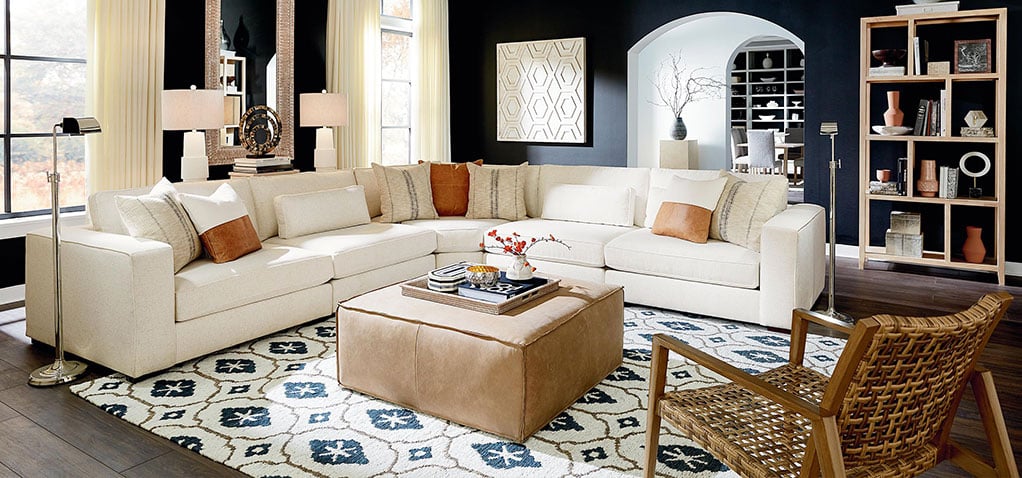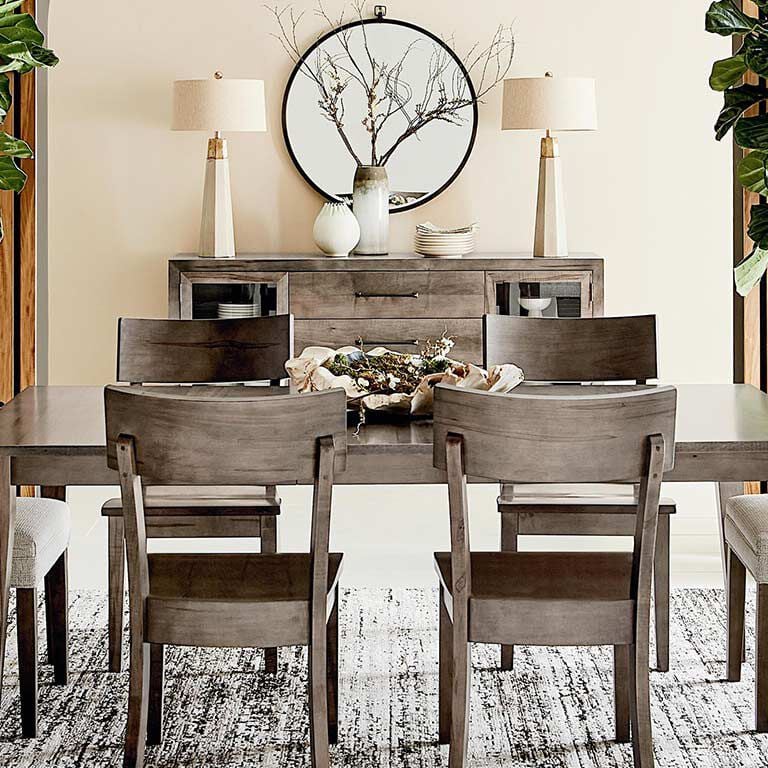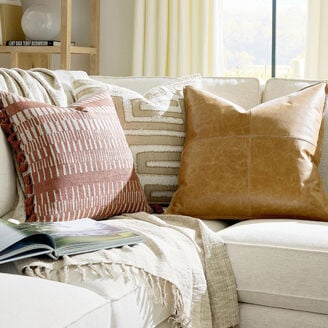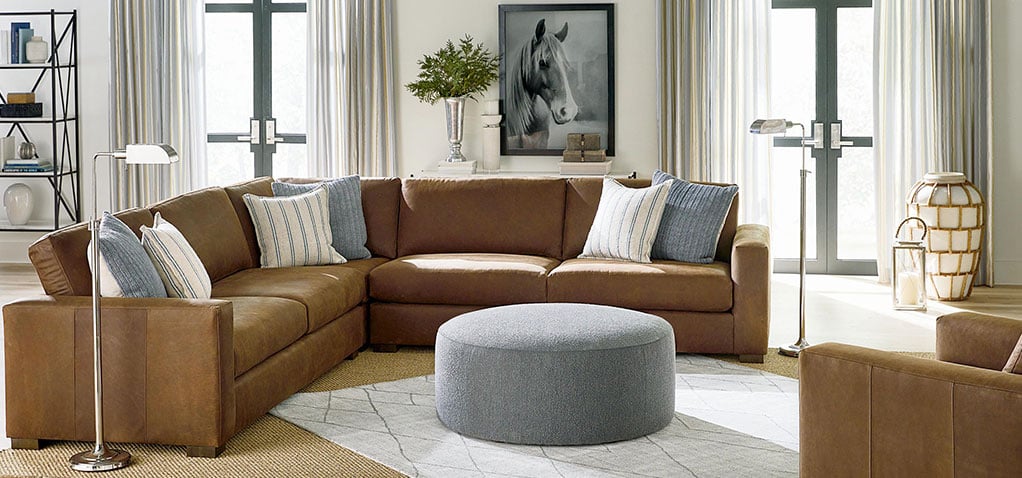Furniture Style: A Guide
Updated 2/3/23

Picture this: You've created the perfect Pinterest board filled with all the types of furniture styles you love but don't know what to call the furniture style. We're here to help you put a name to the different furniture styles, especially your favorites, so you can surround yourself with even more of what you love.
Types of Furniture Styles
This guide on the types of furniture styles includes two lists of furniture styles, encompassing traditional, contemporary, and modern furniture styles.
First, we'll look at historical furniture styles dating back hundreds of years, influenced by classical furniture styles that are even older. These traditional furniture styles build the foundation for our second furniture styles list, which includes many of the more contemporary furniture styles we see today.
What Are Some Examples of Traditional and Timeless Furniture Styles?
Furniture styling has been a mark of wealth and luxury for centuries, from the Jacobean era of the 1600s through the Scandinavian contemporary design of the 1900s. Here’s an overview of historical kinds of furniture styles — and key characteristics of these traditional furniture styles, many of which were influenced by classical furniture styles.
Jacobean (1600–1690): The Jacobean style was borne out of the English Early Renaissance. Jacobean furniture is characterized by straight lines, ornate carvings, and dark finish.
William and Mary (1690–1735): William and Mary style furniture was popular in the late 17th and early 18th century and is characterized by Dutch and Chinese influences, trumpet turned legs, Spanish ball feet, and Oriental lacquer work.
Queen Anne (1700–1755): Queen Anne style furniture emerged during the reign of William III of England. It is characterized by cabriole legs, pad or drake feet, fiddle-backed chairs, and bat-wing-shaped drawer pulls.
Pennsylvania Dutch (1720–1830): Pennsylvania Dutch is an American furniture style with Germanic influences. It is characterized by utilitarian simplicity and colorful folk painting on cases.
Louis XVI (1760–1789): This style was designed for Marie Antionette during the French Revolution and influenced by Neoclassical design. Louis XVI furniture is characterized by Greco-Roman influence, straight lines, classical motifs like fluting, and richly carved details.
Chippendale (1750–1790): This style was created by a cabinet-maker in London named Thomas Chippendale. It can be classified into Gothic, French, and Chinese influences and the Queen Anne style. Chippendale furniture is characterized by cabriole legs, ball and claw feet, and broken pediment scroll top on tall cases.
Hepplewhite (1765-1800): Hepplewhite furniture is named after London designer George Hepplewhite and was popular in the early beginnings of the United States. Hepplewhite furniture is characterized by its Neoclassical influence, delicate appearance, tapered legs, and contrasting veneers and inlay.
Sheraton (1780–1820): The Sheraton style is named after English designer George Sheraton, whose work overlaps with Hepplewhite. Sheraton furniture is characterized by an almost severe simplicity, straight lines, contrasting veneers, and sometimes tapered legs.
Federal (1780–1820): Federal furniture is a combination of the Hepplewhite and Sheraton styles. It is known for its gracefully straight lines, contrasting veneers, neoclassical motifs, and ornamentation.
American Empire (1800–1840): This is a French-inspired furniture style that was popular in the US during the late 19th century. It is known for classical ornamentation, course carvings, and dark finishes.
Victorian (1840–1910): Named after Queen Victoria, this was the furniture style of the English Victorian period. Created during the industrial revolution, Victorian furniture was the first style to be manufactured. Victorian furniture is characterized by a Romantic influence, heavy proportions, dark finishes, and elaborate ornamentation.
Arts and Craft (1880–1910): Influenced by the ideas of artist William Morris, Arts and Craft was the style of the Arts and Craft movement, which sought to recapture the craftsmanship found in pre-industrial guilds. Arts and Craft furniture is characterized by a simple, utilitarian design.
Art Deco (1910–1939): Unlike the Arts and Craft style, Art Deco styles of furniture celebrated design excess. Originating in France shortly before WWI, Art Deco furniture is characterized by bold, vibrant colors, geometric shapes, shiny metal surfaces, exotic wood or ivory inlays, and geometric shapes with sweeping, angular lines.

Scandinavian Contemporary (1930–1950): Named from the group of European countries from which it originated, Scandinavian Contemporary design was popular in the early 20th century. It is characterized by its three tenets of functionality, minimalism, and simplicity, incorporating a utilitarian design made with natural wood.
Modern Furniture Styles
While you can find historical furniture styles in specialty stores, today’s styles are very different. Over the centuries, furniture fashion has deviated from ornate, classic looks to contemporary furniture styles that blur the lines between artistry and functionality.
While most people use the term "modern" or "contemporary" to describe today's furniture, conflating these two terms is actually describing two different design styles. As you will notice in the list of furniture styles below, "modern" and "contemporary" are actually distinct design types in themselves.
A list of a few current furniture design types includes:
Antique: If you like any of the styles we just described, you might like antique furniture. At least a century old, antique furniture is typically made from wood and has unique, ornate details that allow dealers to easily date them.
American Colonial: American Colonial furniture combines different traits from Jacobean, Pennsylvania Dutch, William and Mary, Queen Anne, and Chippendale. While one could say Colonial furniture is a form of traditional furniture, it encompasses a wider variety of styles from the British Colonial period.
Traditional: Combining the best of Queen Anne, Chippendale, and Sheraton styles, traditional furniture typically features graceful ornamentation, straightened lines, and tapered legs. You can read our guide on the traditional furniture style to learn more.
Vintage: Younger than antique furniture, vintage furniture is usually between 50 and 100 years old and is often purchased used. While people often throw around the terms “vintage” and “old” interchangeably, the word "vintage" can suggest more of an artistic flair embracing nostalgia for older time periods.
Rustic: Rustic furniture brings warmth and coziness home. This style is typically made with timber or other natural materials, including hide, cotton, and linen. Accents are a great way to help achieve the rustic furniture style look.
American Design: American styles of furniture have a few things in common: solid wood furniture with distinctive grains and stunning finishes are future heirlooms; live-edge metal, stone, and leather blend rich and rustic.
Retro: While specific pieces that are considered "retro" often depend on the decade referenced, retro furniture is characterized as having more modern designs that imitate past fashion trends. While we sometimes use the term "kitschy" to describe this still, retro design can incorporate pop culture in a way that makes for colorful, even whimsical furniture pieces.
Modern: Modern style came out of the early 1900s modernist movement. It’s best known for its use of monochromatic color palettes and materials like steel, vinyl, leather, and plastic. You can check out our entire guide to the modern furniture style to learn more.
Minimalism: Minimalist furniture combines traits from Scandinavian Contemporary, Modern, and Arts and Craft furniture, resulting in a simple utilitarian style with round shapes and smooth edges. If you believe, "less is more," then you are some of the few minimalists left on this earth. Embrace open spaces and clean, subtle furniture, and you'll feel like your home is where you can feel at peace with both yourself and one another.
Relaxed Modern: This look has a minimalist aesthetic and a relaxed, sophisticated vibe. Sleek silhouettes pair with deep plush seating; metals like champagne brass and brushed nickel pair with oak finishes.
Contemporary: Contemporary style furniture refers to furniture that is popular today. You can check out our entire guide on contemporary furniture style to learn more.
Shabby Chic: Originating from 1980s England, shabby chic combines worn, vintage furniture with an interesting brush and paint effect (usually in white). This style of furniture often combines neutral colors with rustic effects to create a vintage vibe.
Casual Luxe: This Bassett refined rustic look mixes rustic finishes and familiar country forms with sophisticated styles and neutral color palettes. Generously scaled, distinctive silhouettes convey a luxurious yet casual and approachable feel.

Urban Collective: This look is a fresh, livable take on boho-chic, industrial, and mid-century modern designs. Weathered finishes, reclaimed wood, and metal mix with slim silhouettes and custom upholstery. The result — layers of texture and loads of style.
What's your furniture style?
Now that you know which of the different furniture styles and design elements are your faves, you can surround yourself with even more of the design you love.
Still, like some help choosing the style that’s right for you? Make an appointment with a Bassett Designer right now!

